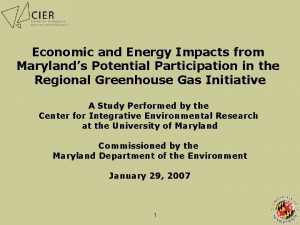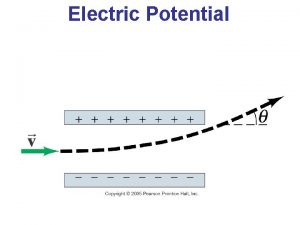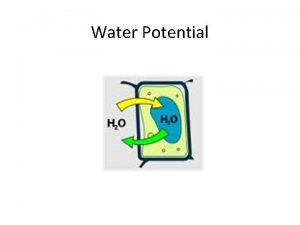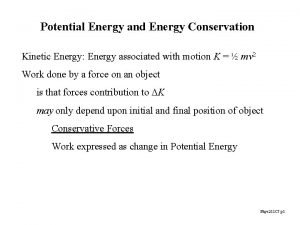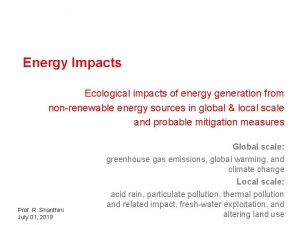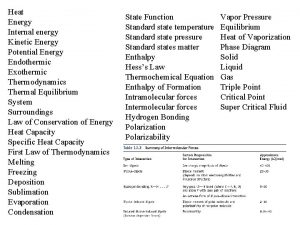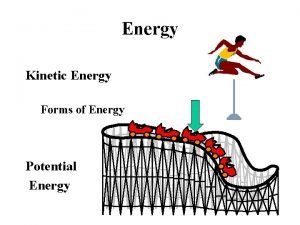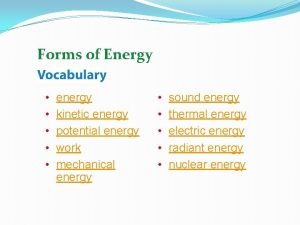Economic and Energy Impacts from Marylands Potential Participation























- Slides: 23

Economic and Energy Impacts from Maryland’s Potential Participation in the Regional Greenhouse Gas Initiative A Study Performed by the Center for Integrative Environmental Research at the University of Maryland Commissioned by the Maryland Department of the Environment January 29, 2007 MD RGGI STUDY 1 January 2007

Study Purpose • Maryland Healthy Air Act – Maryland enacted the Healthy Air Act in April 2006, requiring the Governor to include the State in the Regional Greenhouse Gas Initiative. • MD RGGI Study – MDE is required to study reliability and cost issues that may result from joining RGGI. • University of Maryland – MDE contracted with the University of Maryland through the Center for Integrative Environmental Research (CIER) to research reliability and cost impacts. MD RGGI STUDY 2 January 2007

Study Purpose The study analyzes potential impacts on: – electricity demand – energy supply – generating plant retirement and generator profits – electricity prices – CO 2 allowance prices – CO 2 emissions – emissions leakage – generator competitiveness – generation adequacy – ratepayer impacts – overall economic impacts MD RGGI STUDY 3 January 2007

Research Team University of Maryland Resources for the Future Center for Integrative Environmental Research Dallas Burtaw Karen Palmer Anthony Paul Danny Kahn David Evans Matthias Ruth, Principal Investigator Steven Gabriel, Co-Principal Investigator Kimberly Ross, Project Manager Sanjana Ahmad Russell Conklin Jennifer Cotting Julia Miller Dan Nees The John Hopkins University Towson University Benjamin Hobbs Yihsu Chen (currently at University of California, Merced) Soo Ra Kim Regional Economics Study Institute MD RGGI STUDY 4 Daraius Irani Jeffrey Michael Dana Hawkins January 2007

Study Design and Research Methodology Three complementary models were employed: 1. Haiku: National simulation of the electric power grid & environmental policies (e. g. , emissions control technologies) developed by Resources for the Future This model helps answer questions such as how will Maryland’s electrical power prices will change and how the fuel mix for power generation will change due to the state joining RGGI. MD RGGI STUDY 5 January 2007

Study Design and Research Methodology Three complementary models were employed: 2. IMPLAN: Input-output model of Towson’s Regional Economic Study Institute (RESI) used to estimate the statewide economic and fiscal impacts of Maryland joining RGGI (this model is used frequently by the state) This model helps answer questions such as how will Maryland joining RGGI affect the average annual electricity bill, the state economy, etc. MD RGGI STUDY 6 January 2007

Study Design and Research Methodology Three complementary models were employed: 3. Johns Hopkins University Oligopoly Under Transmission and Emissions Constraints (JHU-OUTEC): Market equilibrium model for the PJM region, which includes Maryland its neighbors; it allows analysis of the potential market power of large electric generating companies, and more detailed transmission capacity analyses This model helps answer questions like whether market power of generation companies is affected by Maryland’s participation in RGGI. MD RGGI STUDY 7 January 2007

Study Design and Research Methodology • Two primary modeling scenarios were employed by all three models: – “Maryland does not participate in RGGI” • the baseline scenario (i. e. , business-as-usual) • the Classic RGGI region consists of the current RGGI states (ME, VT, CT, NH, NJ, NY, and DE) and anticipated RGGI states (MA and RI) Note: MA joined after study completion – “Maryland joins RGGI” • • • includes same assumptions as baseline scenario expands the Classic RGGI region to include Maryland total amount of RGGI CO 2 emissions allowances increased by roughly 1/3 • JHU-OUTEC and IMPLAN use Haiku results as inputs. MD RGGI STUDY 8 January 2007

Study Design and Research Methodology • Comments were solicited from over 60 stakeholders representing more than 30 institutions – The stakeholders ranged from industry to state government agencies to environmental NGOs – Much of the input came in the early stages • modeling assumptions • data parameters • recommendations for future alternative model runs – Stakeholders will be invited to review the report and comments on its analysis • report will be available online at www. cier. umd. edu • comments are due three weeks after report release • addendum with comments will be provided online MD RGGI STUDY 9 January 2007

Findings: Supply, Demand Reliability Maryland Joining RGGI Price of Electricity – Has virtually no effect on electricity price in Maryland. – Reduces electricity demand in Maryland through investments in energy efficiency, which contributes to the lack of a price effect. Reliability/Generator Adequacy – Is unlikely to raise generation capacity prices significantly in the PJM region, because energy efficiency programs would reduce demand for capacity reserves. MD RGGI STUDY 10 January 2007

Findings: Supply, Demand Reliability Maryland Joining RGGI Utility Impacts – Has a negative impact on profits of coal-fired generators, but does not prompt retirement of coal capacity in Maryland. – Produces a very small amount of retirement of existing oil and gas steam capacity. – Has a positive impact on the profits of oil and gas generators, who earn revenues from the sale of CO 2 emission allowances created by the program. MD RGGI STUDY 11 January 2007

Electricity Demand in Maryland joining RGGI lowers net electricity demand in the state by 1. 5% to 3. 0% as a result of increased energy efficiency investment. MD RGGI STUDY 12 January 2007

MD RGGI STUDY 13 January 2007

The Effect of Maryland Joining RGGI on CO 2 Emissions from Electricity Generation in Maryland joining RGGI reduces CO 2 emissions from electricity generators in the state by roughly 13% by 2020. MD RGGI STUDY 14 January 2007

Effects of Maryland Joining RGGI on Cumulative CO 2 Emissions for Expanded RGGI Region Maryland joining RGGI results in total expected emission reductions (including offsets) for the expanded RGGI region of roughly 26 million tons between 2010 and 2025. MD RGGI STUDY 15 January 2007

Findings: Emissions Leakage Maryland Joining RGGI – “Leakage” refers to the change in CO 2 emissions outside of the expanded RGGI region. – We find leakage can be positive or negative depending on where it is measured. – In general leakage is small. MD RGGI STUDY 16 January 2007

RGGI CO 2 Allowance Prices Maryland joining RGGI reduces the price of CO 2 emissions allowances in the RGGI cap and trade program. MD RGGI STUDY 17 January 2007

Findings: Economic Impacts Maryland Joining RGGI Costs to Consumers – The $50 million in annual savings to residential customers in 2010 translates into annual savings of $22 for the average Maryland household. – Total savings to commercial and industrial customers are even greater than residential savings. Job Creation – Over 1, 800 net new jobs are created in 2010 by Maryland joining RGGI which is 0. 06% of total forecasted employment in Maryland in 2010. – In subsequent years, this rises to 0. 1% of total forecasted employment in Maryland. MD RGGI STUDY 18 January 2007

Findings: Economic Impacts Maryland Joining RGGI State Economy – Gross State Product (GSP) is expected to increased by nearly $150 million in 2010 due to Maryland joining RGGI. – The total economic impact is 0. 06% of Maryland’s forecasted GSP for 2010, and remains less than 0. 1% of total forecasted GSP in subsequent years. – There is little fiscal impact on the state, aside from the revenue generated from auctioning allowances, which the model assumes is 100% dedicated to a new energy efficiency program. MD RGGI STUDY 19 January 2007

Findings: Generator Competitiveness and Adequacy Maryland Joins RGGI Generator Competitiveness – There is no evidence that the effects of Maryland joining RGGI will amplify any potential market power in the generation market. Transmission – Assumptions concerning the configuration of the transmission grid after 2015 can make as much difference in power prices and other market outcomes as "Maryland joins RGGI. " MD RGGI STUDY 20 January 2007

Recommended for Additional Review Further review could help answer questions such as: • Given the significance of energy efficiency found in this study, how might further changes in energy efficiency impact the economy, energy use and the environment? – What would be the effect of an allowance auction of more than 25% going to energy efficiency and public benefit? – What would be the impact of technology, such as the new nuclear plants envisioned in 2005 Energy Policy Act, advanced combustion turbines, and gas combined cycle plants? – How would the inclusion of expanded energy efficiency data affect the results? • How do the recently released studies from other states in RGGI compare? • How sensitive are the results to higher natural gas prices? MD RGGI STUDY 21 January 2007

Recommended Research • What are optimal transition strategies for MD coalfired generators in RGGI? • What are optimal expansion strategies for nonfossil fuel based generation in MD? • What would an updated MD Climate Change Action Plan look like? – Roles of RGGI – Roles of CA mobile source emissions standard – Roles of Renewable energy portfolios – Roles of biomass-based energy etc. MD RGGI STUDY 22 January 2007

In Review… Maryland joining RGGI will have • A positive environmental impact • A negative impact on profits for coal-fired power plants, partially offset by increased profits for oil and natural gas plants • Negligible effect on carbon dioxide displacement (“leakage”) to non-RGGI states • Zero impact on electricity rate and lower average electricity bills • A slightly positive economic impact for the state MD RGGI STUDY 23 January 2007
 Cardinality ratio constraint adalah
Cardinality ratio constraint adalah Electrostatic potential difference
Electrostatic potential difference Expression for electric potential difference
Expression for electric potential difference Benefits of logging in solomon islands
Benefits of logging in solomon islands Potential energy of an electric field
Potential energy of an electric field Kinetic energy and potential energy
Kinetic energy and potential energy Potential energy
Potential energy Gravitational potential energy
Gravitational potential energy Conservation of mechanical energy
Conservation of mechanical energy Impact of tidal energy on environment
Impact of tidal energy on environment Equation for energy
Equation for energy Gravity kinetic energy
Gravity kinetic energy What is the definition of chemical potential energy
What is the definition of chemical potential energy Mechanical energy
Mechanical energy Gravitational potential energy vs kinetic energy
Gravitational potential energy vs kinetic energy Kinetic energy vs potential energy
Kinetic energy vs potential energy Graded potential
Graded potential Equipotential lines
Equipotential lines Water potential and osmotic potential
Water potential and osmotic potential Market potential and forecasting
Market potential and forecasting Electric potential and potential difference
Electric potential and potential difference Potential due to a point charge
Potential due to a point charge Electric potential
Electric potential Conclusion of growth and development
Conclusion of growth and development
























